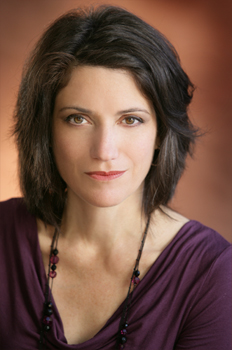
Carla Garapedian
Next year, scholars, students and the public will be able to start watching the 400 interviews of Armenian Genocide survivors and witnesses filmed by Dr. J. Michael Hagopian in USC Shoah Foundation’s Visual History Archive. But Carla Garapedian has already watched every single one.
“I counted myself as a pretty educated person when it comes to the genocide; I thought I knew what had happened. But it’s only when you hear the broad spread of experiences that you really can see the whole picture,” Garapedian said. “Every horrible atrocity you can think of to do to a human being happened to these people. And it’s all there in the collection.”
Garapedian is leading the Armenian Film Foundation’s project to preserve and integrate Hagopian’s collection into the Visual History Archive. Today, the project reached a major milestone: the entire collection, converted from the original 16mm film to digital Motion JPEG 2000 files, was officially handed off from the Armenian Film Foundation (AFF) to the USC Shoah Foundation, so that the work of indexing and integrating the testimonies into the Visual History Archive can begin. The goal is to begin making the testimonies available to watch and search in the VHA in 2015, the 100th anniversary of the Armenian Genocide.
Garapedian is a filmmaker and journalist with a focus on human rights issues. Her films include Screamers, Lifting the Veil and Children of the Secret State, and she also narrated Hagopian’s films Voices from the Lake and The River Ran Red and co-wrote Germany and the Secret Genocide. Garapedian also founded the Pomegranate Foundation which is dedicated to genocide education and the arts.
She said Hagopian and AFF began looking into a permanent home for his collection of Armenian Genocide testimonies so the fragile tapes could be preserved and accessible for years to come. Though some of the testimonies were featured in Hagopian’s documentaries, all of them need to been seen, Garapedian said, not just sit in a vault.
They investigated many archives in which to house the collection, but the Visual History Archive stood out because of its powerful indexing system and its testimonies from other genocides.
“Genocide is a human rights issue. It’s not just about what happened to one group,” Garapedian said. “It’s about understanding how genocides start, and we can’t understand how they start and how to prevent them unless we hear from the eyewitnesses themselves.”
The interviews – she’s watched all of them to check the quality of the film – are harrowing, Garapedian said. The interviewees are in their 70s or 80s and survived the genocide as children, but they describe watching their family and friends being murdered, as well as countless other extremely traumatic situations, in great detail.
In an age when the Armenian Genocide still faces widespread denial, Hagopian’s testimonies, preserved in the Visual History Archive, will add to the historical record of the genocide and allow students, scholars and the public to empathize with the victims and survivors, Garapedian said.
It’s what Hagopian would have wanted, she added. He died, spry as ever at age 97, the night of USC Shoah Foundation's 2010 Ambassadors for Humanity Gala, when he was scheduled to meet Steven Spielberg and celebrate the beginning of the partnership between their two foundations. Garapedian thinks it’s a sign that he knew his work on his collection was done.
“I’d like to think he knows this is in good hands and that more people are going to see the fruits of his labor. It really was a race against time,” Garapedian said. “Now we can, with the Shoah Foundation, share it with the rest of the world.”